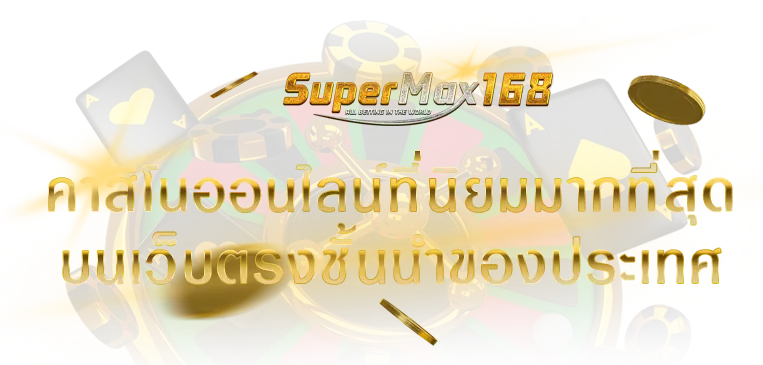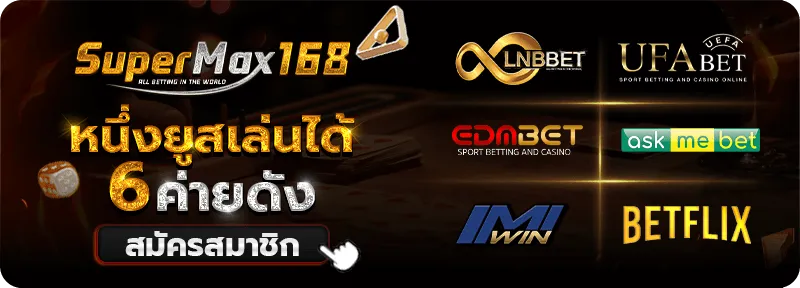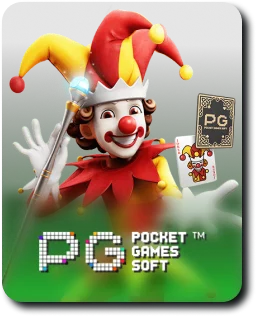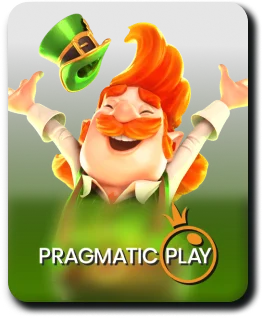supermax168 เว็บตรงมาแรงแห่งปี ฝากถอนไว โบนัสแตกกระจาย!
supermax168 เว็บตรงมาแรงแห่งปีที่พูดถึงกันมากที่สุดตอนนี้ ไม่ได้มาเพราะโชคช่วย แต่มาจากระบบที่ตอบโจทย์ผู้เล่นยุคใหม่ได้อย่างแท้จริง ทุกวันนี้ใครๆ ก็อยากได้เว็บที่ฝากถอนไวแบบไม่ต้องรอให้เสียเวลา บวกกับโบนัสที่แตกง่าย แตกบ่อยจนเรียกว่าแตกกระจายแบบสุดๆ การเลือกเว็บตรงไม่ผ่านเอเย่นต์นั้นช่วยให้คุณมั่นใจได้ว่าการเงินชัวร์ ไม่มีหัก ไม่มีโกง และระบบทุกอย่างรวดเร็วฉับไวตั้งแต่สมัครจนถอนเงิน
เรื่องโบนัสก็ถือว่าเป็นหัวใจสำคัญที่ทำให้เว็บตรง สล็อต เว็บ ตรง 168 นี้ได้รับความนิยม ด้วยโบนัสที่ให้มากกว่าที่อื่น ไม่ว่าจะเป็นโบนัสสมัครสมาชิกใหม่ โบนัสฝากครั้งแรก หรือแม้กระทั่งโบนัสคืนยอดเสียที่มอบกลับมาให้ผู้เล่นแบบเต็มเม็ดเต็มหน่วย ทำให้ผู้เล่นรู้สึกได้กำไรตั้งแต่เริ่มต้น ยิ่งระบบฝากถอนที่รวดเร็วทันใจ ยิ่งเพิ่มความน่าสนใจให้กับเว็บมากขึ้นไปอีก เพราะเมื่อคุณเล่นได้ก็ไม่ต้องรอถอนนาน สามารถโอนเข้าบัญชีทันทีไม่กี่วินาที
ด้วยจุดเด่นทั้งหมดนี้เอง เว็บตรงมาแรงแห่งปีจึงกลายเป็นตัวเลือกอันดับหนึ่งสำหรับผู้เล่นที่ต้องการความคุ้มค่าและความมั่นคง ทั้งยังมีระบบรักษาความปลอดภัยที่แน่นหนา การใช้งานง่ายผ่านมือถือทุกระบบ และมีเกมให้เลือกเล่นหลากหลายแบบไม่ต้องโยกเงินไปมา คุณจะได้สัมผัสประสบการณ์เดิมพันที่ครบครัน จบในเว็บเดียวอย่างแท้จริง

เว็บตรงคืออะไร? ความแตกต่างที่ทำให้เป็นเว็บมาแรงอันดับต้น ๆ
คำว่า “เว็บตรง” อาจฟังดูง่ายแต่มีความหมายที่ลึกซึ้งมากกว่าที่หลายคนคิด 168 คาสิโน เว็บตรงคือเว็บที่เปิดให้บริการโดยไม่ผ่านคนกลาง หรือเอเย่นต์ใดๆ ทำให้ทุกระบบทั้งการเงินและบริการจัดการอยู่ภายใต้การควบคุมของเจ้าของเว็บโดยตรง ซึ่งต่างจากเว็บผ่านเอเย่นต์ที่ต้องผ่านคนกลาง หลายครั้งอาจทำให้เกิดความล่าช้า และความไม่โปร่งใสในเรื่องของการฝากถอนและโบนัส
จุดเด่นที่เห็นได้ชัดเจนของเว็บตรงคือระบบฝากถอนออโต้ที่รวดเร็ว ไม่ต้องรอนานให้เสียอารมณ์เมื่อคุณต้องการถอนเงินจากกำไรที่เล่น สล็อต เว็บ ตรง 168 ได้ นอกจากนี้ความปลอดภัยของข้อมูลส่วนตัวและเงินทุนก็อยู่ในระดับสูงเพราะเว็บตรงจะมีใบรับรองและระบบรักษาความปลอดภัยที่ได้มาตรฐาน เหมาะกับผู้เล่นที่ต้องการความมั่นใจในทุกขั้นตอนของการเดิมพัน
ยิ่งไปกว่านั้น เว็บตรงยังเป็นแหล่งรวมเกมชั้นนำจากค่ายใหญ่โดยตรง ไม่ต้องกังวลเรื่องเกมล้าหรือคุณภาพต่ำ ระบบเกมลื่นไหล ภาพสวยคมชัด และโอกาสชนะก็สูงขึ้นตามไปด้วย รวมถึงโปรโมชั่นโบนัสที่จัดเต็ม เพราะไม่ต้องแบ่งเปอร์เซ็นต์ให้เอเย่นต์ จึงทำให้ผู้เล่น คา สิ โน ออนไลน์ เว็บ ตรง 168 ได้รับผลตอบแทนเต็มๆ ทุกบาททุกสตางค์
ความแตกต่างระหว่างเว็บตรงกับเว็บผ่านเอเย่นต์ ที่ควรรู้ก่อนลงทุน
เว็บตรงให้ความมั่นคงทางการเงินสูงสุด เพราะไม่ผ่านคนกลาง คุณจะได้รับเงินเต็มจำนวนที่เล่นได้ไม่มีการหักค่านายหน้า
ค่าย เกม สล็อต 168 ระบบฝากถอนออโต้ของเว็บตรงรวดเร็วกว่าอย่างเห็นได้ชัด ไม่ต้องรอการอนุมัติจากแอดมินเหมือนเว็บเอเย่นต์ที่อาจล่าช้าและเสียเวลามากขึ้น
โปรโมชั่นและโบนัสของเว็บตรงมักมีความหลากหลายและแจกหนักกว่า เนื่องจากไม่ต้องแบ่งเปอร์เซ็นต์ให้กับตัวกลาง จึงมีงบประมาณจัดโปรมากขึ้น
เกมในเว็บตรง แตกง่าย168 มักเป็นเกมแท้จากค่ายชั้นนำโดยตรง ภาพสวยและโอกาสชนะสูงกว่าการเล่นผ่านเว็บเอเย่นต์ที่อาจดัดแปลงระบบเกมให้ดูน้อยลง
การบริการลูกค้าในเว็บตรงมีความเป็นมืออาชีพ พร้อมระบบช่วยเหลือ 24 ชั่วโมง ตอบคำถามรวดเร็ว ต่างจากเว็บเอเย่นต์ที่บางทีบริการไม่ทั่วถึงหรือไม่มีทีมสนับสนุนที่ดีพอ
เว็บตรงมีความโปร่งใสเรื่องเงื่อนไขโบนัสและการใช้งานระบบ ไม่ปิดบังข้อมูลหรือซ่อนข้อกำหนดที่ซับซ้อนให้ผู้เล่นสับสน
รีวิวและการบอกต่อจากผู้เล่นจริงส่วนใหญ่มักยกให้เว็บตรงเป็นตัวเลือกที่เชื่อถือได้และคุ้มค่าที่สุดในตลาดการเดิมพันออนไลน์

ระบบฝากถอนไว ในเว็บตรง supermax168 ส่งผลกับการเล่นยังไง?
พูดถึงเรื่องระบบฝากถอนในเว็บตรง supermax168 สิ่งนี้เป็นหัวใจสำคัญที่ทำให้เว็บนั้นถูกยกให้เป็นเว็บมาแรงอันดับต้น ๆ เพราะในยุคที่ใครก็อยากได้เงินเร็ว ไม่ต้องรอข้ามวันหรือรอแอดมินอนุมัติ ความรวดเร็วของระบบฝากถอนจึงเป็นจุดขายที่ยิ่งใหญ่ที่สุด เมื่อคุณเล่นได้และอยากถอนเงิน กดถอนปุ๊บ เงินเข้าบัญชีทันที ไม่ต้องเผชิญกับความล่าช้าที่ทำให้เสียอารมณ์
ระบบฝากถอนอัตโนมัติที่ทันสมัยของเว็บตรง ค่าย สล็อต 168 ยังช่วยให้คุณเล่นได้อย่างต่อเนื่อง ไม่มีสะดุด หรือกังวลว่าระบบจะล่มเวลาฝากเงินในช่วงเวลาคนเล่นเยอะ นอกจากนี้ยังรองรับการฝากถอนหลายช่องทาง ไม่ว่าจะเป็นผ่านแอปธนาคาร หรือทรูวอเล็ท ทำให้สะดวกในการเติมเงินและรับเงินคืนที่เร็วทันใจ เหมาะกับคนที่ชอบความคล่องตัว ไม่อยากพะวงเรื่องการเงิน
ข้อดีของระบบฝากถอนที่เร็วนี้ ยังช่วยส่งผลต่อการรับโบนัส คา สิ โน ออนไลน์ เว็บ ตรง 168 เพราะบางโปรโมชั่นต้องทำยอดฝากขั้นต่ำในเวลาที่กำหนด หากฝากล่าช้าอาจทำให้พลาดสิทธิ์ ดังนั้นเว็บตรงที่ฝากถอนรวดเร็วจะเพิ่มโอกาสให้คุณได้ใช้โบนัสที่แจกแบบจัดเต็ม พร้อมเพิ่มโอกาสทำกำไรได้มากขึ้นอย่างเห็นได้ชัด
โบนัสแตกกระจายที่เว็บตรง คุ้มจริงหรือแค่คำโฆษณา?
เมื่อพูดถึงโบนัสแตกกระจาย หลายคนอาจสงสัยว่าเว็บตรงที่โปรโมตกันหนัก ๆ จะคุ้มจริงไหม หรือแค่คำโฆษณาที่ทำให้ดูดี ในความเป็นจริงโบนัสที่แจกนั้นมีความจริงใจมากกว่าที่หลายคนคิด เพราะเว็บตรง ค่าย สล็อต 168 มักให้โบนัสที่ครบถ้วนและเงื่อนไขไม่ยุ่งยาก ทำให้ผู้เล่นสามารถถอนเงินได้จริง ไม่ต้องกังวลว่าจะโดนล็อคหรือหักเงินตอนถอน
โบนัสที่แตกกระจายมีหลากหลายรูปแบบ ไม่ว่าจะเป็นโบนัสต้อนรับสำหรับสมาชิกใหม่ โบนัสฝากเงินครั้งแรก โบนัสตามเทศกาล หรือแม้แต่โบนัสคืนยอดเสีย ที่ช่วยให้คุณลดความเสี่ยงในการเล่น ค่าย เกม สล็อต 168 และเพิ่มโอกาสในการทำกำไรได้มากขึ้น นอกจากนี้เว็บตรงยังมักจัดกิจกรรมแจกโบนัสพิเศษที่คุณไม่ควรพลาด เพราะส่วนใหญ่โบนัสเหล่านี้ออกมาแบบจัดเต็ม จ่ายจริงทุกบาท
ในมุมของผู้เล่นที่ลองใช้จริง ต่างยืนยันว่าโบนัสแตกกระจายนี้ไม่ใช่แค่คำพูดเก๋ ๆ แต่เป็นการสร้างความคุ้มค่าให้กับผู้เล่นอย่างแท้จริง เพราะนอกจากจะได้โบนัสสูงแล้ว ยังเล่นเกม สล็อต 168 ได้อย่างต่อเนื่อง ไม่มีสะดุด มีโอกาสชนะสูงขึ้น ทำให้ทุกการลงทุนมีความหมายมากกว่าเดิม
เทคนิคใช้โบนัสจากเว็บตรงให้ได้กำไรจริง โดยผู้เล่นมืออาชีพ
โบนัสที่แตกกระจายมักจะมาพร้อมกับเงื่อนไขที่ต้องทำยอดเทิร์นโอเวอร์ก่อนถอนเงินได้ เทคนิคแรกคือการอ่านและทำความเข้าใจเงื่อนไขโบนัสอย่างละเอียด ว่าแต่ละโบนัสต้องเล่นเกมไหน ทำยอดกี่เท่า รวมถึงต้องทำภายในเวลากี่วัน เพื่อวางแผนการเดิมพัน supermax slot ให้มีประสิทธิภาพสูงสุด
จากนั้นเลือกเกมที่เหมาะสมกับโบนัส เช่น สล็อตที่มีอัตราจ่าย (RTP) สูง หรือเกม เว็บตรง มาใหม่ ที่เล่นง่าย โอกาสชนะบ่อย ช่วยทำเทิร์นได้ไวโดยไม่ต้องเสียเงินทุนมาก วิธีนี้ช่วยลดความเสี่ยงและทำกำไรได้จริงในระยะยาว
สุดท้ายคือการตั้งเป้าถอนกำไร เมื่อทำยอดเทิร์นครบตามเงื่อนไข ให้ถอนกำไรออกก่อน แล้วค่อยเล่น เว็บตรง ของจริง ต่อยอดด้วยเงินทุนที่เหลือ หรือใช้โบนัสใหม่ที่ได้ในรอบถัดไป การวางแผนแบบนี้จะช่วยให้คุณรักษากำไรและสนุกกับการเล่นอย่างไม่เครียดเกินไป นี่คือวิธีที่ผู้เล่นมืออาชีพใช้กันจริงๆ เพื่อทำเงินจากเว็บตรงอย่างยั่งยืน

วิธีเลือกเว็บตรงมาแรงที่ดีที่สุด ต้องดูอะไรบ้าง?
เมื่อรู้ข้อแตกต่างระหว่างเว็บตรงกับเว็บเอเย่นต์แล้ว ต่อมาคือวิธีการเลือกเว็บตรงที่มาแรงจริงและตอบโจทย์การเล่นของคุณ สิ่งแรกเลยคือระบบฝากถอนต้องรวดเร็ว ไม่เกิน 1 นาทีเพื่อไม่ให้เสียอารมณ์ระหว่างเล่น ควรมีช่องทางการฝากหลายรูปแบบ รองรับทั้งแอปธนาคารและทรูวอเล็ท เพื่อความสะดวกสูงสุด
ต่อมาคือเรื่องโบนัสและโปรโมชั่น เว็บตรงที่ดีต้องมีการอัพเดทโปรโมชันตลอดปี ไม่ใช่แค่ช่วงแรก ๆ ที่สมัคร แตกง่าย168 นอกจากนี้เงื่อนไขการรับโบนัสต้องชัดเจน เข้าใจง่าย ไม่ซับซ้อนเกินไปจนผู้เล่นไม่กล้ารับ เพราะโบนัสควรเป็นประโยชน์ ไม่ใช่อุปสรรค แนะนำให้ลอง รวมเกมสล็อตแตกง่ายที่สุด บนเว็บตรงที่มีผู้เล่นยืนยันว่าแจ็คพอตแตกบ่อยจริง
อีกข้อที่สำคัญคือบริการลูกค้า ต้องมีทีมงานพร้อมตอบคำถามตลอด 24 ชั่วโมงผ่านหลายช่องทาง ทั้งแชทสดและโทรศัพท์ การเข้าใช้งานเว็บต้องง่าย มือใหม่ก็เล่น เว็บตรง มาใหม่ ได้ รองรับมือถือทุกระบบและมีระบบรักษาความปลอดภัยขั้นสูง รวมถึงมีรีวิวจากผู้เล่นจริงในโลกออนไลน์ที่ดูน่าเชื่อถือ ซึ่งจะช่วยให้คุณตัดสินใจเลือกเว็บตรงที่เหมาะสมที่สุด
คำถามที่พบบ่อย (FAQ)
เว็บตรงมาแรงแห่งปีมีจุดเด่นอย่างไรที่ทำให้ได้รับความนิยม?
จุดเด่นคือระบบฝาก-ถอนที่ไวในไม่กี่วินาที, ความน่าเชื่อถือของเว็บที่ไม่ผ่านเอเย่นต์ และโบนัสที่แจกหนัก แตกง่าย จึงเป็นที่นิยมในหมู่นักเดิมพัน
การฝาก-ถอนของเว็บตรงมีความปลอดภัยแค่ไหน?
เว็บตรงส่วนใหญ่มาพร้อมระบบรักษาความปลอดภัยระดับสูง พร้อมการเข้ารหัสข้อมูล และมีระบบอัตโนมัติที่ตรวจสอบธุรกรรมได้แบบเรียลไทม์ จึงมั่นใจได้ว่าปลอดภัยและรวดเร็ว
โบนัสแตกกระจายหมายถึงอะไร?
หมายถึงการแจกโบนัสหรือรางวัลในเกมที่ถี่และง่ายกว่าปกติ ไม่ว่าจะเป็นโบนัสฟรีสปิน แจ็กพอต หรือเครดิตฟรี ช่วยเพิ่มโอกาสในการทำกำไรให้กับผู้เล่น
สรุปทั้งหมด เว็บตรงมาแรง ฝากถอนไว โบนัสแตกกระจาย ตัวเลือกที่ตอบโจทย์ทุกคน
จากที่เราเล่ามาตั้งแต่ต้นจนถึงตอนนี้ จะเห็นได้ชัดว่าเว็บตรง supermax168 มาแรงแห่งปีนี้มีจุดเด่นเรื่องระบบฝากถอนที่รวดเร็ว โบนัสแตกง่าย และความปลอดภัยที่สูงมาก สิ่งเหล่านี้ทำให้ผู้เล่นมั่นใจได้ว่าการลงทุนกับเว็บตรงไม่ใช่เรื่องเสี่ยง แต่เป็นโอกาสในการสร้างรายได้และความสนุกที่แท้จริง
การเลือกเล่นเว็บตรงจะช่วยให้คุณไม่ต้องเสียเวลารอเงินหรือกังวลกับระบบที่ไม่ชัวร์อีกต่อไป อีกทั้งโบนัสที่แจกไม่ว่าจะเป็นโบนัสสมัครใหม่ โบนัสฝากแรก หรือกิจกรรมพิเศษล้วนมีความคุ้มค่าและสามารถทำกำไรได้จริงหากใช้เทคนิคและวางแผนดีๆ ทั้งหมดนี้ทำให้เว็บตรงมาแรงกลายเป็นตัวเลือกอันดับหนึ่งในใจผู้เล่นทั้งหน้าใหม่และมืออาชีพ
สุดท้าย อย่าลืมว่า เว็บตรง ของจริง ที่ดีควรมีบริการครบครัน ระบบเสถียร ใช้งานง่าย และมีรีวิวจากผู้เล่นจริงประกอบการตัดสินใจ เพื่อให้ทุกการเล่นของคุณเต็มไปด้วยความมั่นใจและความสุขที่แท้จริง ไม่ว่าจะฝาก ถอน หรือรับโบนัส ทุกอย่างควรเป็นเรื่องง่ายๆ ที่ช่วยให้คุณสนุกและทำเงินได้แบบไม่มีสะดุด







